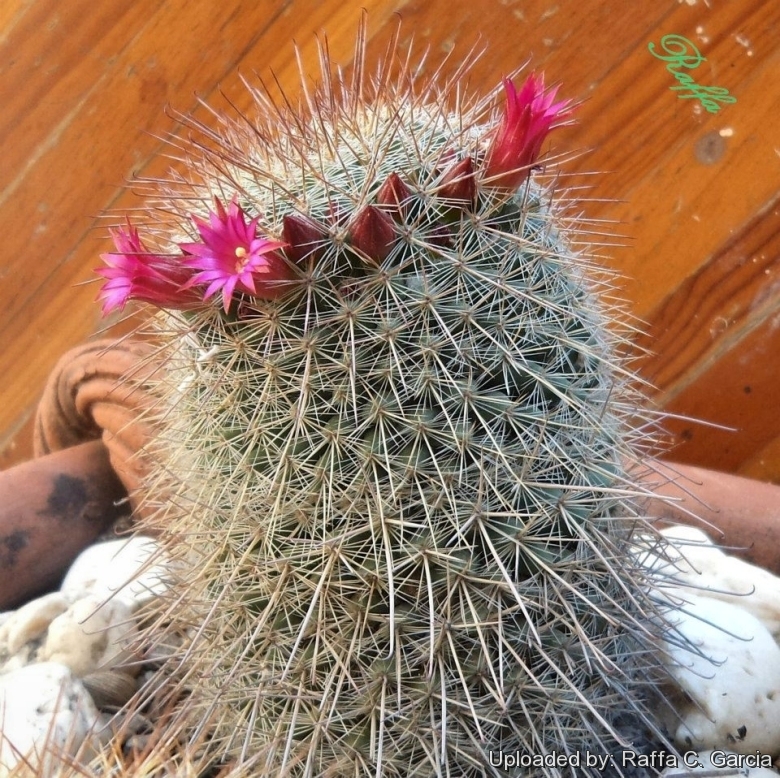
Mammillaria nunezii Photo by: Raffa C. Garcia
Origin and Habitat: Mexico (Guerrero, Morelos, Jalisco, Michoacan). Population size varies across the range (likely with elevation), and the species can be abundant or rare.
Altitude range; 1.000 - 1.600 metres above sea level.
Habitat and Ecology: The species occurs in oak (Quercus) forests. In some areas the species is threatened by subsistence and seasonal agriculture. This cactus is locally used as an ornamental plant.
Synonyms:
See all synonyms of Mammillaria nunezii
Description: Mammillaria nuneziiSN|13783]]SN|20620]] is a solitary or occasionally clustering cactus with showy flowers in June. It is somewhat variable in habit and has a dense spination. Two subspecies are recognized, the nominate subspecies and subspecies bella (Backeb.) D.R.Hunt.
Stem: Robust, globose to cylindrical, pale-green to grey-green , sunken apically, 6-9 cm in diameter and up to 15 cm tall. Without latex.
Tubercles: Conical to bluntly four-angled, about 7-9 mm long and 5-7 mm in diameter, closely set, terete in section.
Parastichy number: 13-21.
Axil: With silky bristles and some wool.
Areoles: Large, white and woolly.
Radial spines: 10-30, stiff, slender, the uppermost being the shortest white, widely spreading, (3-)5-7 mm long.
Central spines: 2-4(-9), unequal usually straight, but one may be hooked, reddish-brown or brown with blackish tips, (7-)10-15 mm long.
Roots: Fibrous.
Flowers: Funnelform, deep pink to magenta 12-15 mm in diameter, narrowly opening. Stigma-lobes green.
Blooming season: It flowers with the freedom of Mammillaria spinosissimaSN|20620]]SN|13783]], in early summer.
Fruits: Club shaped, greenish white tinged with pink, to 25 mm long and 6-8 mm wide, ripens 12-14 months after flowering.
Seeds: Small brown, round to club-shaped, 0,9 mm long and 0,8 mm in diameter.
Subspecies, varieties, forms and cultivars of plants belonging to the Mammillaria nunezii group
 Mammillaria nunezii (Britton & Rose) Orcutt: (subsp. nunezii) It tends to cluster and has 2-9 brown central spines and magenta flowers.
Mammillaria nunezii (Britton & Rose) Orcutt: (subsp. nunezii) It tends to cluster and has 2-9 brown central spines and magenta flowers.- Mammillaria nunezii subs. bella (Backeb.) D.R.Hunt: It stays usually solitary and has 4-6 white central spines with red tips. Flowers are carmine.
 Mammillaria supraflumen Repp.: It is usually solitary, but occasionally forms offsets. It has fewer spines.
Mammillaria supraflumen Repp.: It is usually solitary, but occasionally forms offsets. It has fewer spines.
Bibliography: Major references and further lectures.
1) Arias, S. & Arreola, H. 2013. "Mammillaria nunezii." The IUCN Red List of Threatened Species. Version 2014.3. <www.iucnredlist.org>. Downloaded on 30 January 2015.
2) John Pilbeam “Mammillaria The Cactus File Handbook” Cirio Pub. Services, 01/December/1999
3) Edward Anderson “The Cactus family” Timber Press, Incorporated, 2001
4) James Cullen, Sabina G. Knees, H. Suzanne Cubey "The European Garden Flora Flowering Plants: A Manual for the Identification of Plants Cultivated in Europe, Both Out-of-Doors and Under Glass" Cambridge University Press, 11/August /2011
5) David R Hunt; Nigel P Taylor; Graham Charles; International Cactaceae Systematics Group. "The New Cactus Lexicon" dh books, 2006
6) Urs Eggli, Leonard E. Newton "Etymological Dictionary of Succulent Plant Names." Birkhäuser 2004
7) Ulises Guzmán, Salvador Arias, Patricia Dávila: "Catálogo de cactáceas mexicanas." Universidad Nacional Autónoma de México, Mexiko-Stadt 2003
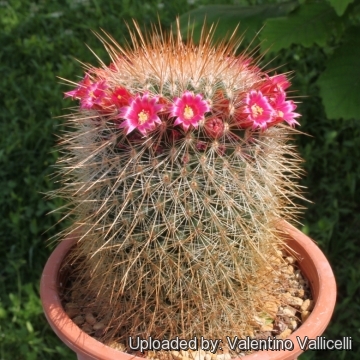 Mammillaria nunezii Photo by: Valentino Vallicelli
Mammillaria nunezii Photo by: Valentino Vallicelli Mammillaria nunezii Photo by: Valentino Vallicelli
Mammillaria nunezii Photo by: Valentino Vallicelli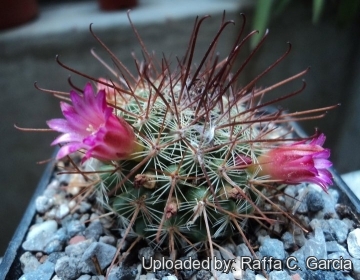 Mammillaria nunezii Photo by: Raffa C. Garcia
Mammillaria nunezii Photo by: Raffa C. Garcia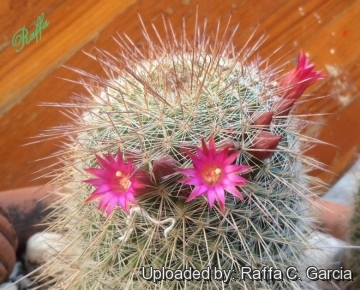 Mammillaria nunezii Photo by: Raffa C. Garcia
Mammillaria nunezii Photo by: Raffa C. Garcia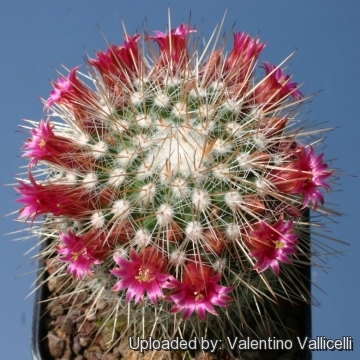 Mammillaria nunezii Photo by: Valentino Vallicelli
Mammillaria nunezii Photo by: Valentino Vallicelli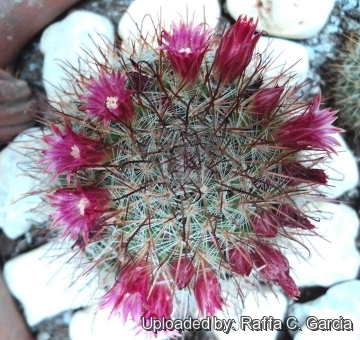 Mammillaria nunezii Photo by: Raffa C. Garcia
Mammillaria nunezii Photo by: Raffa C. Garcia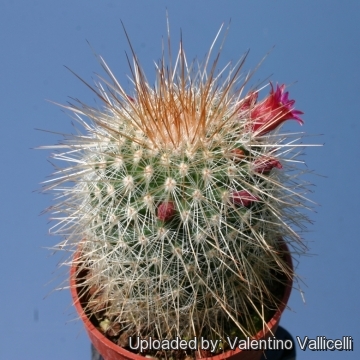 Mammillaria nunezii Photo by: Valentino Vallicelli
Mammillaria nunezii Photo by: Valentino Vallicelli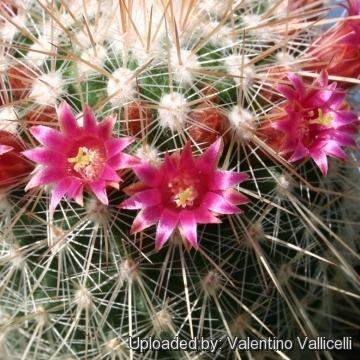 Mammillaria nunezii Photo by: Valentino Vallicelli
Mammillaria nunezii Photo by: Valentino VallicelliCultivation and Propagation: It is a slow growing species of easy culture, recommended for any collection, it doesn't require any special treatment. Water regularly in summer, but do not overwater (Rot prone) Use pot with good drainage and a very porous potting media, keep dry in winter. Feed with a high potassium fertilizer in summer. It is quite frost resistant if kept dry, hardy as low as -5° C (some reports give it hardy to -5°C) Sun Exposure: High levels of light are needed to flower and for good spine development. Can be sunburned if moved from shade/greenhouse into full sun too quickly. During the spring it may be able to take full sun until the heat arrives at the end of spring. In an area that has hot afternoon sun, it may be able to take full morning sun, but requires afternoon shade or afternoon light shade. If grown correctly, it will reward the grower with generous displays of purple flowers.
Clustering in cultivation after several years and easily flowered. For best results, use a shallow pot, and only use the smallest diameter pot that will accommodate the plant. Sensitive to red spider mite. Overhead watering is helpful in controlling mites.
Propagation: Direct sow after last frost (usually) or division, wait until the offsets that appear at the base of old clustered specimens are 1/3 the size of the parent and then detach and plant.
Your Photos
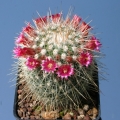
by Valentino Vallicelli
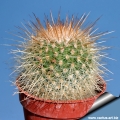
by Cactus Art





















